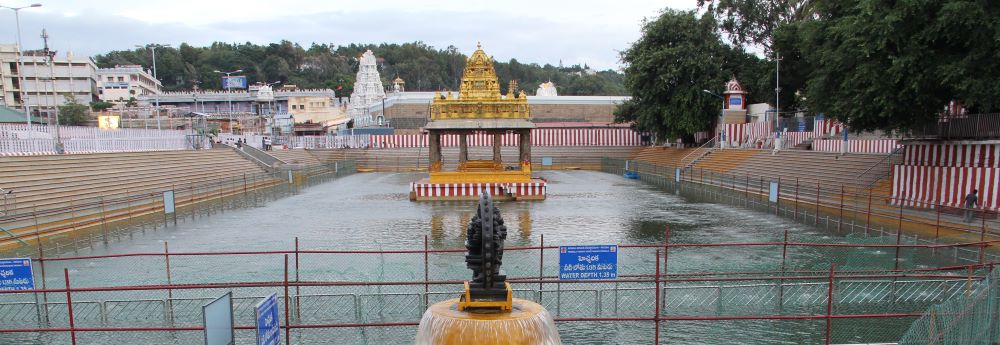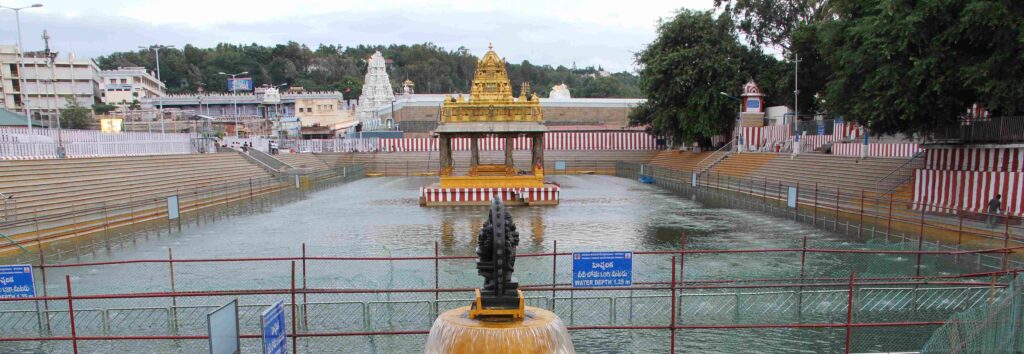Origin of Swami Pushkarini Generally, the term Pushkarini refers to a Theertha Thataakam (Bigger water pond) and Swami Pushkarini is nothing but jala roopam of the Kali Yuga daivam, ‘The Lord Srinivasa’ Himself. That is the Greatness of Swami Pushkarini of Tirumala Hills. We can list out various facts about Swami Pushkarini from various Puranas, Read More
Tag: Swami Pushkarini Theertham
There is a Koneru (A stone faced tank with steps) near Adivaraha Swamy Temple in Tirumala Kshethra. This is known as Sri Swami Pushkarini Theertham
Tirupati Balaji – Swami Pushkarini
The article “Swami Pushkarini – The Path for Salvation” published in Sapthagiri Magazine by “Sri M.R.K. Sateesh Babu” Swami Pushkarini Swami Pushkarini is a sacred lake located on Venkatachala Mountain adjacent to Ananda Nilayam where the deity resided after he arrived from heaven on his divine vehicle. Of the seven lakes in Trilokas, Swami Pushkarini Read More


